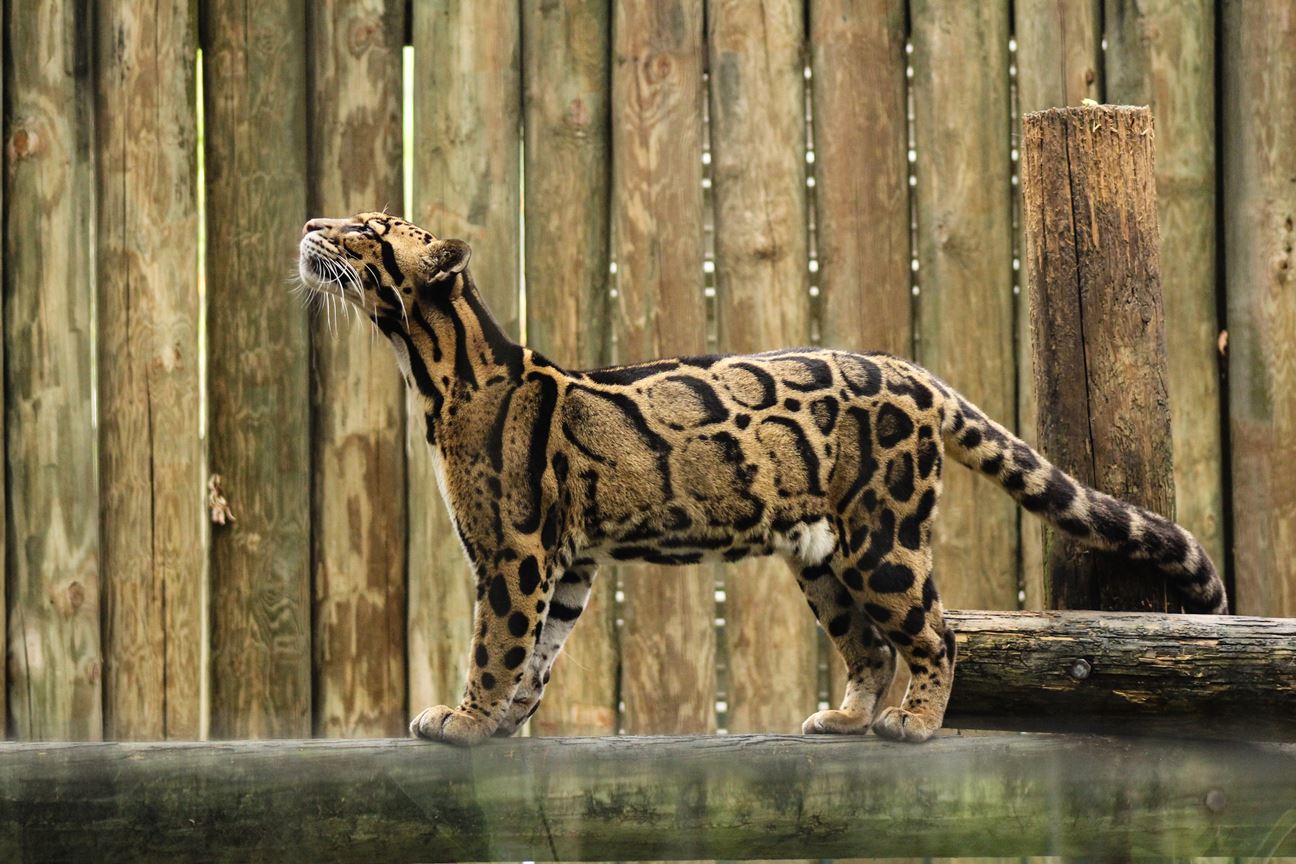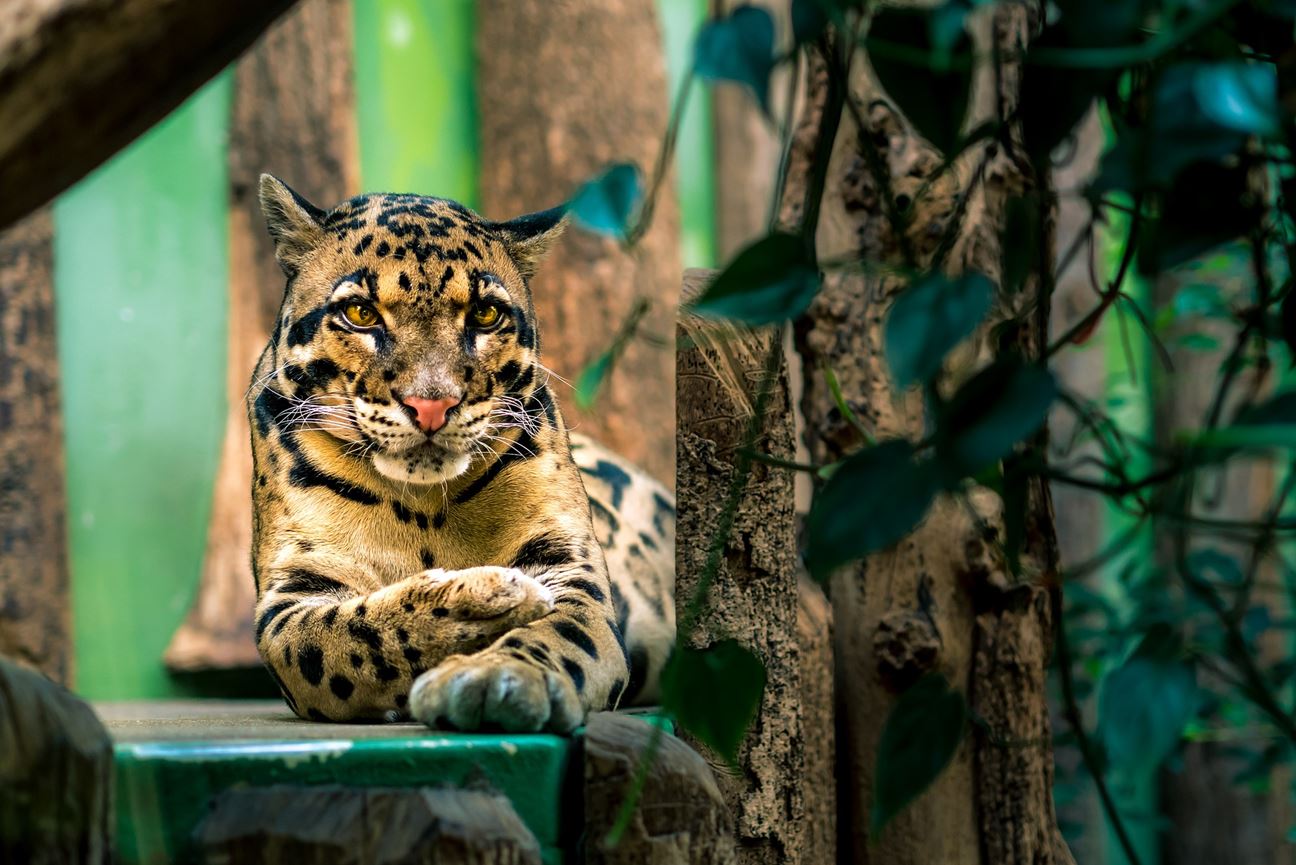Clouded Leopard is an endangered big cat due to habitat loss. Surprisingly, it was recently found at an altitude of 3498 metres—way higher than its usual habitat—in the Langtang National Park.
Clouded Leopards are known for their unique cloud-like spotted coat. The coat helps them perfectly camouflage in their habitat, i.e. the dense forests. Unfortunately, they are classified as a Vulnerable Species on the IUCN Red List because of habitat loss and illegal poaching. They’re hunted for the trading of their claws, teeth and skin which are used in Asian medicines or as decoration.
The exact number is unknown, but it is estimated that less than 10,000 are left in the wild. It is believed that the vanishing rate of this cat is almost 10% every year since 1987.
The cats are divided into two species: Mainland Clouded Leopard (Neofelis nebulosa) and the Sunda Clouded Leopard (Neofelis diardi). The Sunda Clouded Leopards have darker and smaller cloud markings than the Mainland Clouded Leopards.
Let’s get ourselves more familiar with this magnificent cat!
Physical Features

Their coat colour changes from yellow to brown with dark cloud-like patterns on the entire body. They have prominent black spots on their head and ears. The cats are around 4–6 feet long including the tail and stand tall at around 10–16 inches tall. Males are larger and heavier than the female. A male can weigh up to 23 kgs whereas the female weighs up to 16 kgs.
Habitat and Range
These cats are found in diverse regions of Asia like the rainforests of Indonesia, the Himalayan foothills of Nepal, and some parts of China, Bhutan, Thailand, and Borneo.
In India, they are mainly found in the dense forests of West Bengal, Sikkim, Meghalaya, Mizoram, Tripura, Assam and Arunachal Pradesh. Some of the best national parks to spot these majestic creatures are the Namdapha National Park (Arunachal Pradesh), Manas National Park (Assam), Clouded Leopard National Park in Sipahijola Wildlife Sanctuary (Tripura), Buxa National Park (West Bengal) and Dampa National Park (Mizoram).
Previously, these cats were found at the maximum altitude of 2300 metres above sea level. However, they were recently found at an altitude of 3498 metres in the Langtang National Park in Nepal—the first time ever! The study was led by Özgün Emre Can in 2019 and proved to be a world record for these species. This study has definitely got us good news that these cats may be more widespread and adaptable than we knew, but it also has started concerns about climate change affecting these cats and their survival.
The surprising thing was that this species was believed to be extinct in Nepal before 1987. Later, it was estimated that around 100 clouded leopards call Nepal their home. Currently, after seeing the diverse habitat, there is hope that the population is over 100 in Nepal.
Diet
Like the other big cats, these, too, are carnivores. They feed on wild pigs, monkeys, deer, squirrels, and even birds. They are known to wait for their prey to come close rather than directly go for a direct kill. After they’re done feasting on their kill, they go back on the tree to relax and digest their food.

Breeding
- Clouded leopards reach sexual maturity after 2 years of age. Also, there is no specific mating period, but in captivity, most have mated in the months of December to March. The gestation period is of 85–93 days.
- Females give birth to a litter of one to five cubs once every year.
- The cubs are blind, just like the young of other cats. They can see only after 10 days of birth and start getting active within the next 5 weeks.
- The cubs stay with the mother and become independent after almost 10 months. The whole responsibility of raising the children is taken up by the mother.
Special Features and Behavior
Clouded Leopards are one of the best climbers in the cat family and they’re mostly arboreal - seen on trees rather than on the ground. They only come down to hunt their kill. The tight grip with their paws and claws enables them to even hang upside down from the large branches. They also have short legs and rotating rear ankle joints which help them climb down similar to a squirrel (head first). Also, their long tails are a great way to maintain balance.

They have the largest upper canine teeth in proportionate to their body size; compared to other wild cats. Their jaws boast of a wide gape of almost 100 degrees. The teeth and jaws are similar to the extinct group of sabre-toothed cats (remember Ice Age?).
They are mostly solitary animals other than the breeding period or weaning period of the cubs. It is seen that the cats are mostly nocturnal and seen resting on the branches in the day.
In Captivity
Studying them has been quite difficult because of their secretive nature in the wild, hence a lot of information has been gathered from the leopards that are in captivity. Mating has also been a real challenge for the leopards in captivity. There are cases of aggression between the male and the female which has even resulted in death. Many conservationists are trying to pair them at a younger age, which has given good results.
They are known to live for 13–17 years in captivity, but there are no speculations about their lifespan in the wild.
More Research
A study was done using 3,000 camera traps in 45 different sites, around 9 countries. It suggested only 9.44% of the habitat was actually suitable for these cats. In India, the research was done in the Dampa Tiger Reserve in Mizoram. It was estimated that it had one of the highest populations of the clouded leopard. The reason being the extremely less human movement in this area as it is difficult to access for humans.
The species was enlisted for more research in 2018 by adding it to India’s Recovery Program for Critically Endangered Species. When the research started, it noted that there was a decline in detecting the leopards by 25% because of the loss of closed-canopy forests. Deforestation and reduced rainfall greatly affect these cats.
Since then, more efforts have been taken for the conservation of this beautiful cat.